Types Of Grandfather Clocks (Models & Movements)
Guide to the types of grandfather clocks with what they are, different models, movements, comparison to grandmother & longcase clocks, and if grandfather clocks are in style.
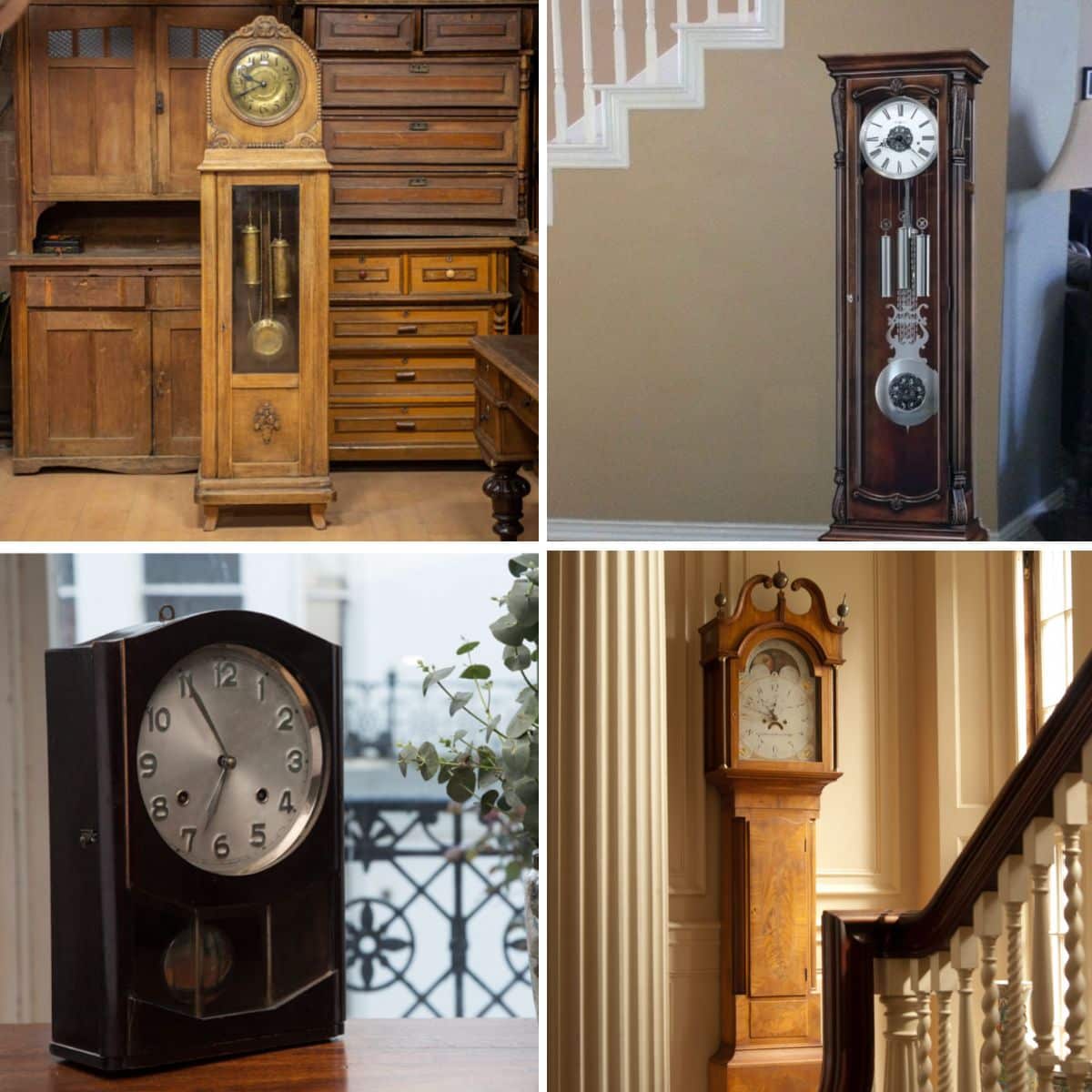
Quicklook: Different Types of Grandfather Clocks
• Comtoise
• Bornholm
• Empire
• Mora
• Howard Miller
• Grandfather Cuckoo
• Miniature
What Are Grandfather Clocks?

These clocks have long and interesting histories behind them. You’d probably guess that the name implies that they belong to the world of grandparents but this actually isn’t the case. It isn’t as simple as that. Grandfather clocks have so much more significance behind where they sprung from and the names they hold.
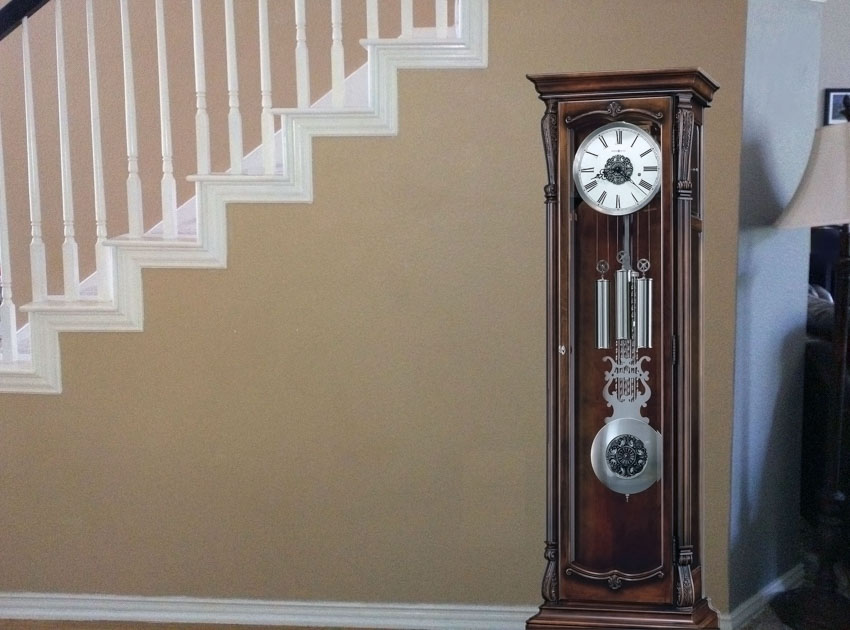
According to folklore, the clock started slowing down and becoming erratic as the owner aged and it eventually stopped working and became “dead” when its owner passed away.
The song Henry Clay Work wrote about that clock because so wildly popular that the name just kind of stuck. It wasn’t long before all longcase clocks were nicknamed as grandfather clocks since then.
Grandfather-Style Clock Cultural Significance
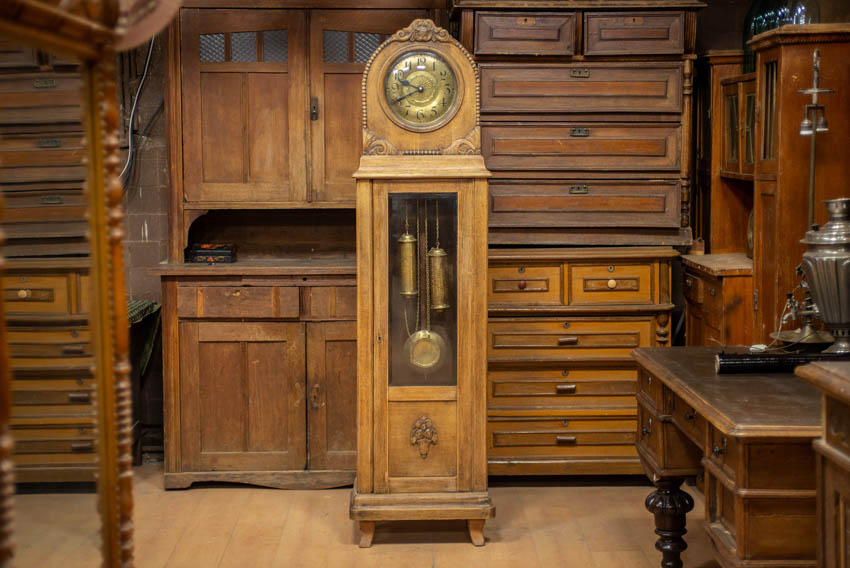
Its sole existence is the embodiment of the passing of time and all the wonders that come along with it. It is also quite efficient as it reminds us about the importance of keeping things on schedule. The world would be in a state of total disarray if we had no regard for the value and measurement of time.
The grandfather clock is one of the most unique and popular types of clocks out there. This particular clock was created back in the 17th century with a back-then amazing invention wherein a pendulum would swing in sync with every second that passes by.
This was considered as a bit of a breakthrough back in the day because the other clocks that came before it only used weights and an assortment of springs to keep their systems running.
This unique clock employed the use of a long pendulum, hence the requirement of a long case to actually house it. This is how the style and the design of the grandfather clock eventually came to be.
The very invention of this type of clock held a profound significance in the world of clock-making in general. It transcended clocks from just a mere tool to tell time into something that can be considered as a cultural piece of art.
People started to depend on clocks to tell them when to wake up, when to go to work, have tea, eat, and so much more. Because of clocks, we no longer had to rely on the shadows cast by the sun on a dial in order for us to tell what time of the day it is.
Mankind because so much better at regulating day-to-day life schedules and in managing time. The grandfather clock made it possible to keep track of time and the concept of lateness, making it no longer socially acceptable to not meet a time that has been agreed upon.
There are different types of grandfather clocks and they can be used as contemporary living room ideas or for other areas in the house.
Comtoise Clocks
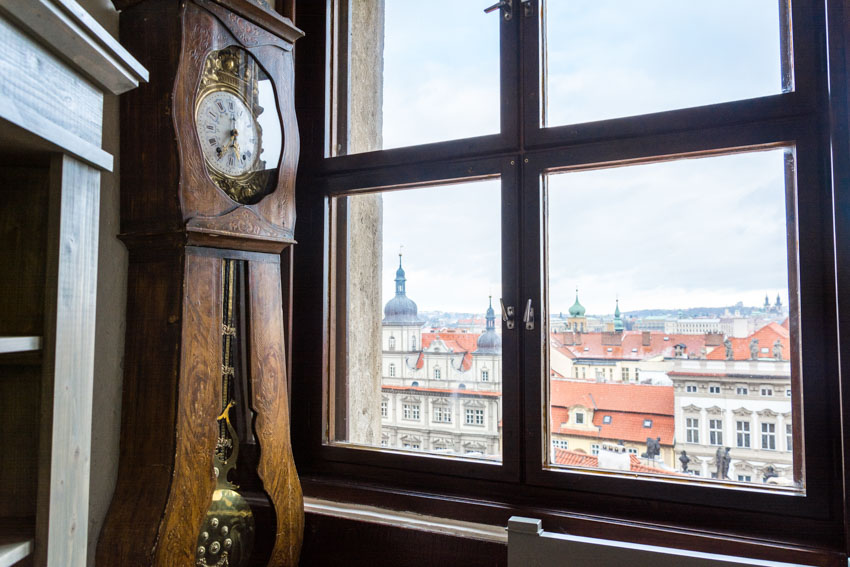
The Comtoise originated out of France, coming from the French region of Franche-Comte. This is how the clock got its name.
This clock is weight-driven. It represented the period in France where the use of clocks became wildly popular. Up until the 19th century, the Comtoise clock can be found all over the country and even spread out abroad. They became so popular that they eventually booted all the other local types of clocks out of the picture.
Comtoise clocks are built on huge and sturdy frames that are made out of almost indestructible iron strips. They have long cases made out of vine. They’ve painted and distressed in the fashion of country furniture. Its sides are often tapered off similar to the shape of a violin.
The dials were either made out of pewter or brass. It has black numerals and has a single hand. Later on, the dials had enamel cartouches. And then later on, at the onset of the 19th century, they evolved so much that they even had a third hand that later indicated the date.
The Comtoise clocks eventually declined in popularity as they started to get replaced with cheaper and more efficient German clocks. Their final decline was during the First World War. The comtoise clock was later on phased out to pave the way for more modern types of clocks.
Bornholm Clocks
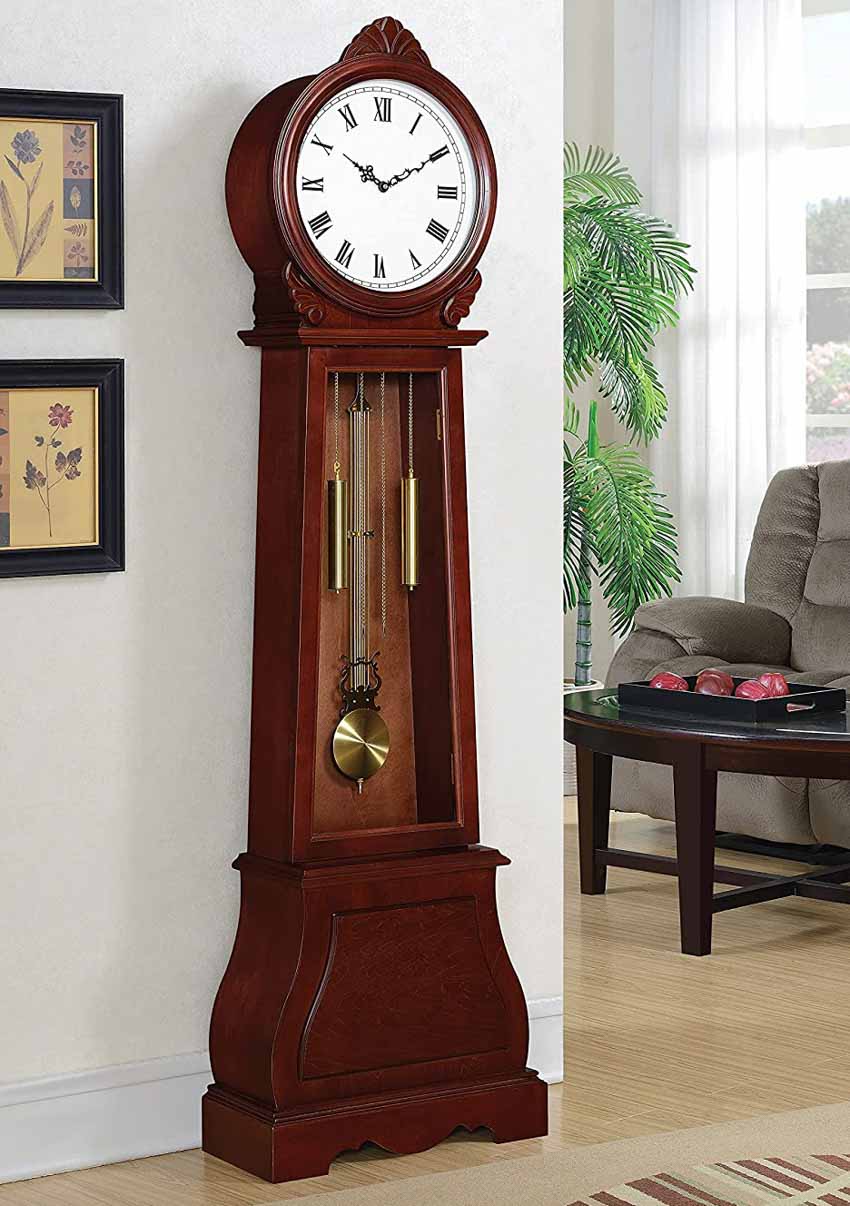
Bornholm clocks have lead weights. They weigh eight pounds each. The clock’s main body has three main sections: it has the head, the case, and the foot. All sections have straight sides.
The foot though, often has corners that are rounded and they’re coupled with molding that’s typically four-sided. The clock’s face is made out of either iron or brass. The corners are usually adorned and they’re oftentimes made out of lead.
The roman numerals are made out of tin and the brass hands are pierced. The overall effect is something that’s extremely ornate and beautiful.
The face is made out of a little rounded tin and it’s installed on a five-pointed crown. The crown usually has the clockmaker’s name etched inside it. It also usually has the year of manufacture included in it.
The other hand of a Bornholm clock is typically painted with motifs that are oftentimes biblical. There have been other variations wherein the designs are bowed gesims. It all depends on the manufacturer’s creativity.
Empire Clocks
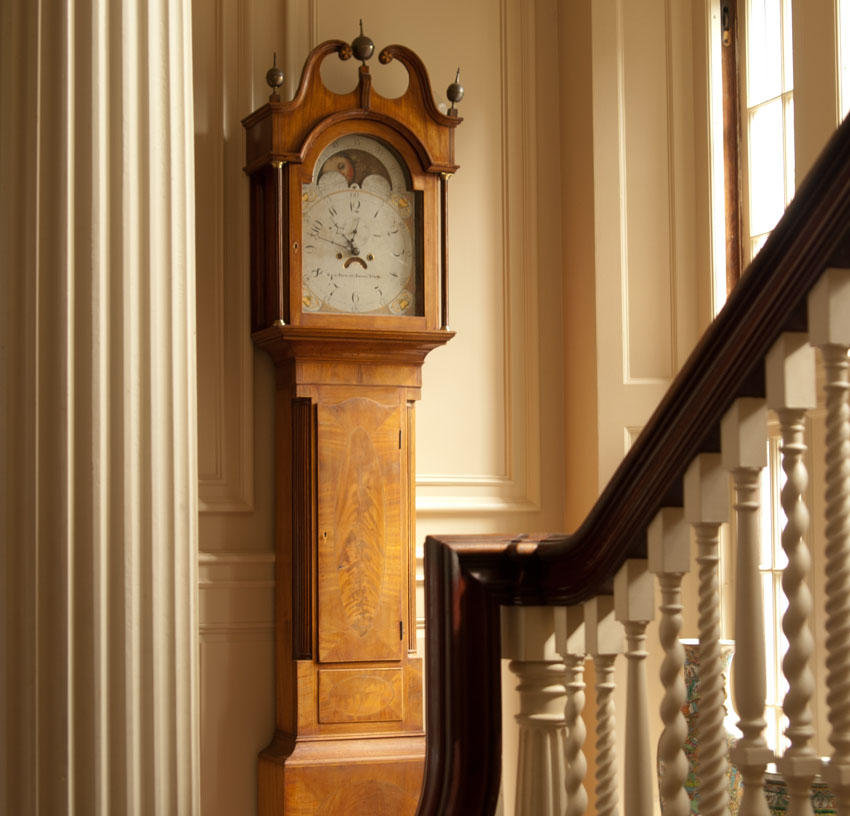
The body of this particular clock also has three main pieces, the case, the head, and the foot. The head has even side sand usually comes rounded. Its window is distinctive for its row of pearls. There is also usually a laurel wreath carved right below it. The foot is angled with the corners carved with capitals.
Another name for the empire clock is the “Han” or “he”. The sides are bowed out and they were created somewhere within the 1830s timeline.
Mora Clocks

The Mora clock originated back in the 18th century. This was a time when there happened to be prolonged periods of droughts. This heavily affected the town of Mora. A lot of residents soldiered on during this difficult time.
The small population that happened to escape to Stockholm learned a lot of skills in their new city. When they returned to their hometown in Mora, they started to turn things around when they started an industry in clock making along with some innovative techniques in farming.
Clockmaking became a major industry in Mora and helped a lot of families with their livelihoods. The mora clocks have slender bodies. This means that these clocks can fit easily in narrow and tight spaces.
This is as opposed to English clocks that are similar in design but are far bulkier. They measure about 12 inches in depth and are typically 99 inches tall with a width of 28 inches.
They function off of 8-day movements and are equipped with cast iron weights. The striking mechanisms are either made out of two bells or some kind of spiral wire gong and they’re typically located at the top of the clock.
They are known to be one of the most timeless and classic of all the grandfather clocks out there. Every single piece and part of it was made by hand and they own have a distinct identity as well as personality. Because of the amount of artistry and history they hold, they are unparalleled compared to any other type of grandfather clock.
Mora clocks also have different types: the Fryksdall Mora clock, which has exceptional carvings on the main unit or main face. It’s mainly white or gray with a pinched waist as well as a prominent belly.
The city mora clock makes a style statement because of its beautifully painted finished. It has elegant pieces that are mainly decorative as well.
And then there’s the country mora clock which is the least decorative out of the bunch. It has a rather plain appearance and is a popular choice for poorer families.
This is a customary wedding gift as well. Compared to the other varieties, this clock has less amount of glass and usually just has a simple crown in its hood.
Howard Miller Clocks
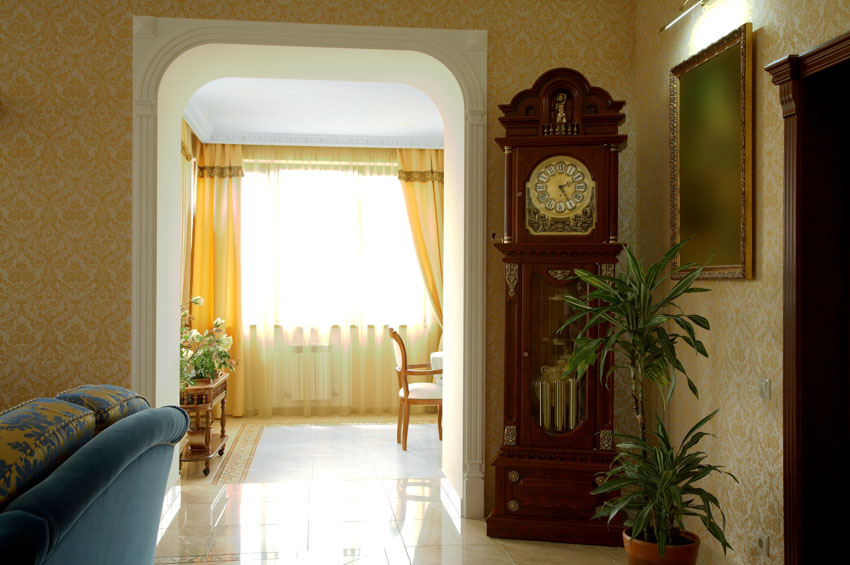
This foil label can either be found on the back of the clock or in its inside case; usually behind the clock’s working parts. Its older models will typically have a label that says “Made in Germany”. This came from the old world craftsmen employed at the Kieninger Company of Germany.
Grandfather Cuckoo Clocks
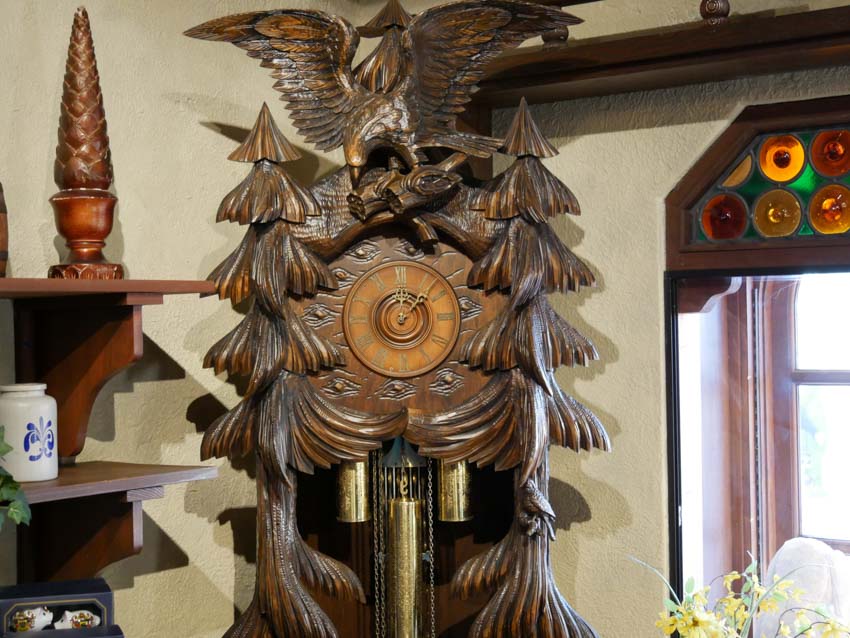
The carvings are normally made out of pine trees and are on each side of the front case of the clock. There are also other forest figures such as a mother cub with her bears, a house in the prairie with a thatched roof, and other similar scenes.
It got its name from a cuckoo bird installation that comes out every hour and every half hour. At every hour, a cuckoo sound is distinct for a very rich sounding alarm sound. It comes from a 72 note music box. It has 1 to 3 tunes.
Miniature Clocks
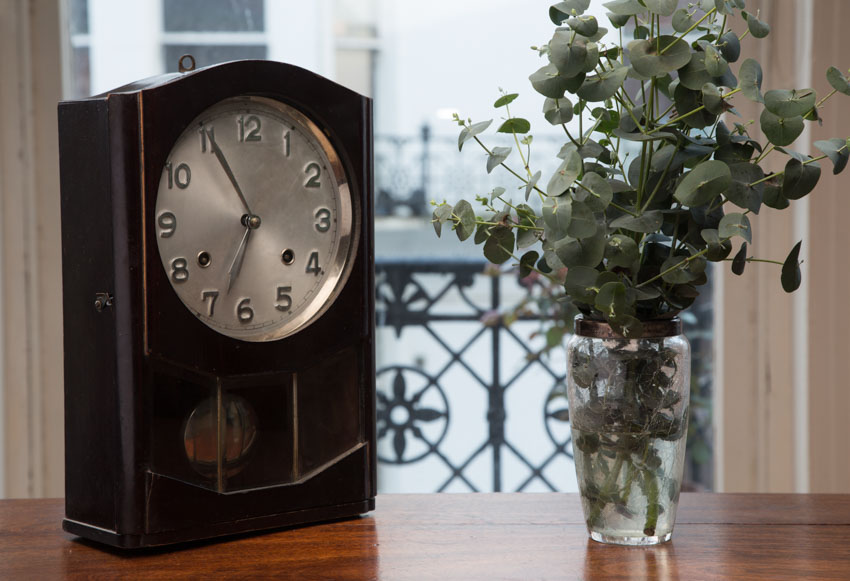
Over time and with the challenges in city living, clockmakers have come up with a clever homage to the tall and towering grandfather clocks.
This is where the miniature grandfather clock comes in. They’re handy and pretty portable and they can bring in that added old world elegance without the cost and without the space requirement.
Of course, it pays to have the real deal but where you that isn’t an option, miniature grandfather clocks can definitely be great things to consider when it all comes down to it.
Clock Movements
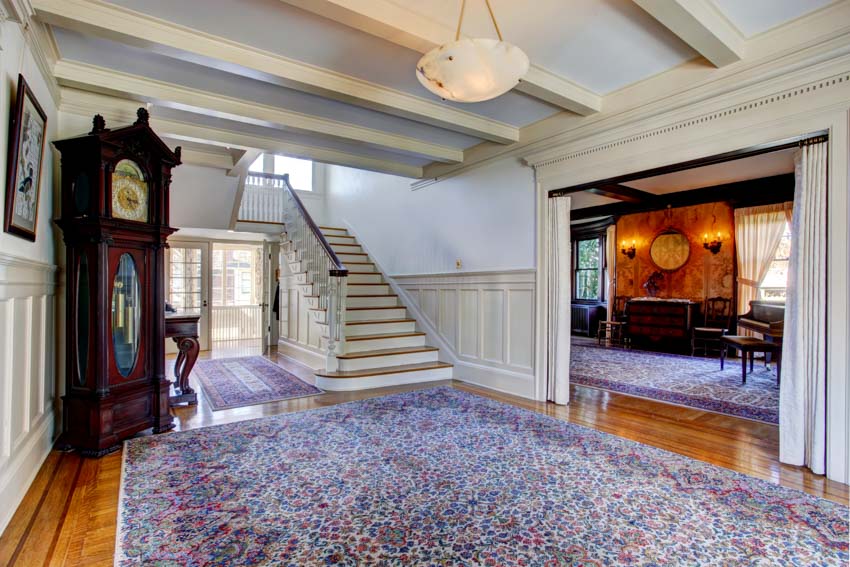
One-Day Movement
This type of grandfather clock movement requires it to be winded daily. Grandfather clocks with the one-day movement system function off of one single weight.
That weight runs the striking mechanism of the clock and drives its timekeeping system as well. This is a type of system that’s inexpensive. It’s great for people who can’t afford eight-day movement systems without giving up the luxury of owning a grandfather clock.
Eight-Day Movement
This movement system or style requires the clock to be winded weekly. Unlike the one-day movement system, this one functions off of two weights. The first weight is used to drive the striking mechanism of the clock while the other weight is in charge of propelling the pendulum.
The weight of the pendulum bob itself has little effect on the period of the pendulum. However, a heavier bob helps to keep the pendulum moving smoothly until it receives its next push from the clock’s escapement mechanism. – Clock Repairer’s Bench Manual, D. Rod Lloyd
This type of movement has a striking mechanism that’s comprised of a chime or some sort of bell. It has a pair of keyholes on either side of its dial. These keyholes are for the purpose of getting the clock winded up.
Now on to the fun part. We’ll now discuss the different types of grandfather clocks. They do have common traits though. They stand anywhere from 6 to 8 feet tall. They have strong frames aimed to support the swinging pendulums driven by the weights.
Here’s the difference between what a chain-driven grandfather clock is between a cable-driven one. And then, of course, there’s the automated version that’s powered by a quartz battery.
Chain Driven Clock
Chain driven clocks are comprised of three chains, one for each weight. The right one powers the melody. The middle one powers the time movement. The third one powers the actual hour count and strike.
The weights will drop systematically over the week, continuously powering the clock. By the end of the week, all of the weights will be almost at the bottom and will need to be put back at the top so that they could work again for the next week.
Every chain has two ends, and one weight is hung on one so that the chain can go back into the clock and then around an installed sprocket. It then goes back down. This allows it to be pulled down again to bring the other chain with the weight back up.
This chain driven mechanism costs so much less to manufacturer. This is why they can usually be found in the cheaper and entry-level grandfather clocks.
When you’re pulling the chain downs, it would be best for you to wear gloves or at least some type of cloth. This is because the brass on the chains might end up tarnishing over time and they can turn out to be very difficult to clean or polish.
Cable Driven Clock
The cable driven grandfather clock, on the other hand, has a mechanism with three cables. Each of them will have weights. The one on the right powers the melody. The one in the middle will be the one running the time.These types of cable driven mechanisms are more popular than a chain driven model.
The one on the left will power the count and hour strike. How this works is that the weights drop as they continue to power the clock. By the end of the week, all of the weights will be fairly close to the bottom and you will need to return them to the top. This is so that they can function again for the next week.
The advantage that cable driven grandfather clocks have over the chain driven ones is that you can just wind the weights up by way of a key that’s been inserted into a dial. You never have to touch the brass inside the clock and what this means is that the chains are more protected from wear and tear and tarnish.
Quartz Battery Operated Clock
Simplicity really is the key when it comes to how battery operated quartz grandfather clocks work. This type of clock requires no type of winding at all. It also does not require anything to get it set up.
This is the advantage of a little bit of innovation. This can not only add a certain sense of elegance in the different types of room in a house because of what the grandfather clock can bring in, but it also adds in the unexpected bonus of being very convenient at the end of the day.
You just need to check whenever the clock starts to erroneously give the time or totally stops working. Perhaps that would be the time for you to replace the battery.
Grandfather Vs Grandmother Clock
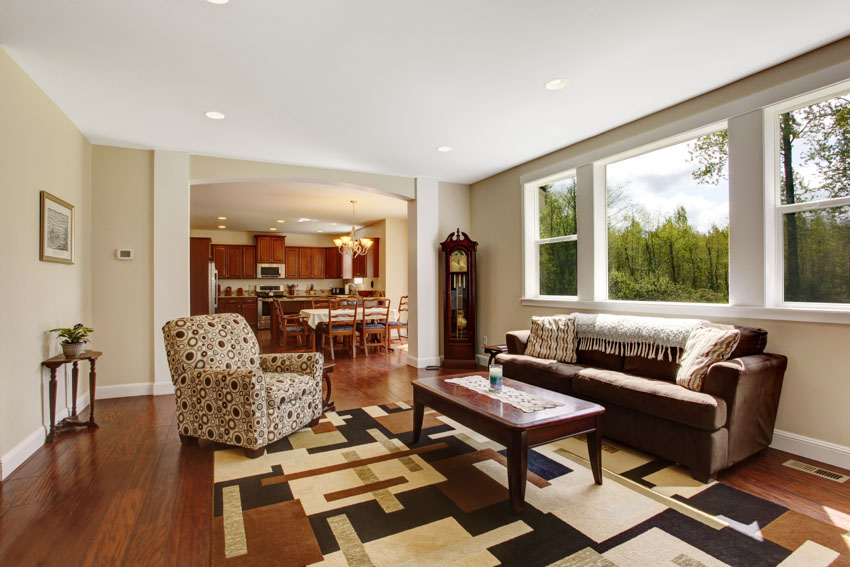
Let’s start off with what they have in common first. Both the grandfather and grandmother clocks have long cases. They both have pendulums as well. However, the main difference is that the grandfather clock is much taller than the grandmother clock.
A grandfather clock typically stands at around 6 to 7 feed whereas the grandmother clock measures out at a good 5 to 6 feet. An inventor and physicist named Christiaan Huygens invented the pendulum that’s being used in these longcase clocks. He discovered that you can actually track a single second by way of the pendulum’s swing.
So to cut the long story short, grandmother clocks are very much just like the grandfather clocks. They just happen to be much shorter. Hence, the moniker.
Differences Between A Grandfather And A Longcase Clock?

Obviously, the grandfather clock is the tallest of them all. It’s freestanding at a minimum of 6 feet tall. It has a pendulum, a hood, and a dial. It can have variances in the movement depending on the clock type that you bought but oftentimes, it’s bound to have a solid timber case.
The features in a grandfather clock are also oftentimes far more elaborate and ornate. They also come with either brass or painted dials and they often have carvings of either biblical or forest scenes.
Are These Clocks Still In Style?
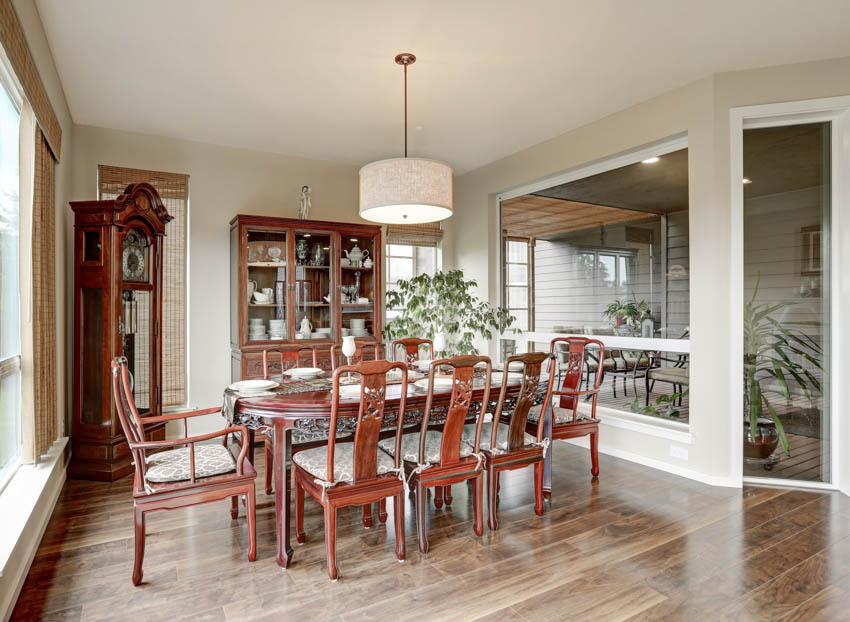
Grandfather clocks are still being manufactured and can be purchased to this day but oftentimes as an artisanal item. They usually fall under the fine furniture category. This means that they can come with a hefty price tag and that they would have to be ordered online and custom made.
You really need to be committed to this though. If you’re going to get a grandfather clock, you have to understand right from the start that some old parts may require expensive replacements and maintenance. But thankfully, everything is online now and most of these things ship worldwide.
See more related content in our article about decorating a combined living and dining room on this page.






